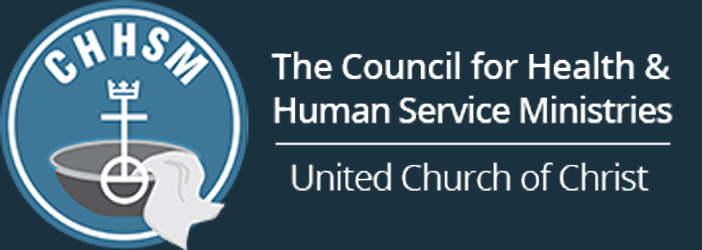After Education Campaign, EdenHill Successfully Begins COVID Vaccinations Across Entire Campus
This article reprinted with permission from EdenHill Communities, a CHHSM member in New Braunfels, Texas.

By Terry Jackson
What does it take to provide COVID-19 vaccines to an entire senior living campus? Hard work, organization, and patience. While COVID-19 has impacted our entire planet, senior communities in particular have been brutally challenged. For our residents and staff, receiving these vaccinations is a bright light at the end of a very dark tunnel.
EdenHill serves approximately 400 seniors in a variety of settings, ranging from fully independent cottages and apartments through 24-hour nursing care. We employ more than 300 staff members, whose responsibilities cover all hours of the day and night. What did it look like getting all these individuals vaccinated given the array of procedures, physician appointments and schedules involved?
As the country anticipated vaccine development, our state health department rolled out registration planning as part of a nationwide vaccine registry for long term care facilities. Our status as a Continuing Care Retirement Community (CCRC) was a bit unique. All of our residents in nursing care and assisted living were clearly ranked in the “Tier 1A” category of those eligible for the very first vaccinations. These residents are over age 65 and have medical conditions which make them susceptible to the worst effects of this virus. However, those living in our Independent areas are just that: independent. And while they are over age 65, some — but not all — of these individuals have challenging medical conditions. They were initially categorized in the “Tier 1B” category. We knew, however, that because our staff must work across several areas of our campus, the most effective strategy would be to vaccinate the entire campus to prevent the spread across service lines. As state health departments recognized CCRCs as a continuum, our independent living residents were considered part of the initial vaccine group.
Our CEO petitioned Walgreens, our contracted pharmacy for vaccinations, and requested that all residents and staff across our community receive vaccines as soon as possible in the distribution process. We needed to quickly gather exact numbers of all residents and staff interested in taking the vaccine.
However, prior to tallying these numbers, it was essential to provide an educational campaign to help everyone understand the critical need for receiving the vaccine. People had serious concerns about how the vaccine might impact their health, whether it was necessary, and how it could directly impact the well-being of the seniors we serve. We offered written information, multiple Q & A sessions, and staff-produced educational videos.
Following the educational roll-out, we spoke individually with all residents or their emergency contacts to gain authorization to receive the vaccine. Being committed to the safety and well-being of our residents and staff, getting as many folks vaccinated as possible was paramount. The CDC recommends vaccinating anywhere from 70 to 90 percent of individuals to achieve “herd immunity.” This is the level where enough people in a population develop immunity to the COVID-19 virus that the pathogen is no longer able to spread within the community.
When we learned that all levels of our campus were eligible for the vaccine, the joy was palpable! Staff literally cheered. We submitted our tallies of people to be vaccinated. Then we waited. And waited.
After several disappointments and delays in distribution, we finally performed the first vaccine clinic. On January 8, our first large-scale vaccination took place for Nursing residents and staff. Our second clinic took place on January 18, vaccinating residents and staff in our Assisted Living and Independent areas.
In advance, we had asked all residents to block off the entire day for the clinic. As the date got closer, we assigned specific time slots for individuals to receive the shot. Each resident and staff member had paperwork to complete. Our team provided detailed education on where to go, what to wear, and what to bring with them; and we assisted those with low-vision, memory or health challenges who couldn’t complete the information.
The atmosphere was festive, although exacting. Our team practiced serious crowd control to reduce the number of people in a location at any one time. We prepared “vaccine treats” and served them to those who received their injections. Never before had folks been so eager to roll up their sleeves! A surprising number of our jovial, mature adults requested a lollipop after their shot.
Over the past 10 months, our community has endured many heartbreaking challenges, including loss of visitors, isolation, and loss of loved ones on our campus. We endured them together, just as we received the vaccine — together. As an EdenHill family.
We have two more sets of vaccine clinics scheduled. People will receive their second dose three weeks after their first. A second set of clinics was established for anyone who couldn’t participate in the first clinic. The full benefits of the vaccine are not in effect until one to two weeks after receiving the second dose.
Ours is a success story. By partnering with Walgreens and our regulatory agencies, we will have achieved an optimal number of residents and staff vaccinated by the conclusion of these clinics. We couldn’t be more appreciative. We owe this outcome to so many hard-working staff as well as the support of our residents and their families. This was truly a monumental challenge met with monumental effort. We couldn’t be more joyful in achieving this success with those we serve.
Terry Jackson is director of independent living and marketing for EdenHill Communities.
Join Our Mailing LIst
"*" indicates required fields
Follow on Facebook
New Resident Finds Belonging at Emmaus Homes - CHHSM
www.chhsm.org
Heather’s journey toward independence has been nothing short of inspiring. Since moving into her new home last year, Heather’s world has expanded in ways she never imagined. Leaving the familiarit...